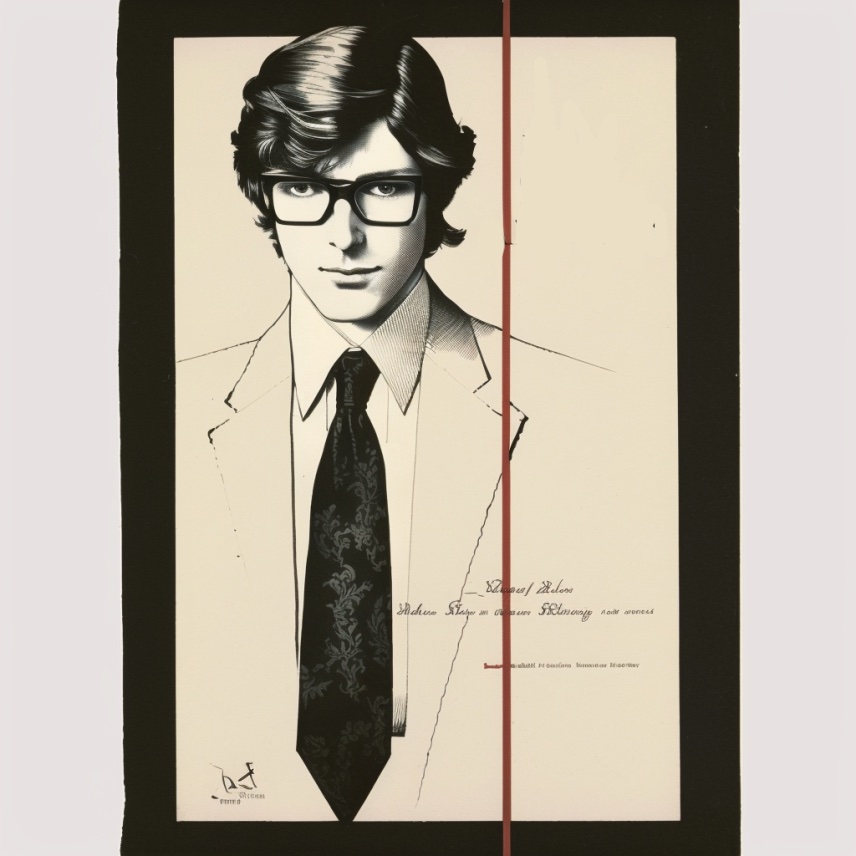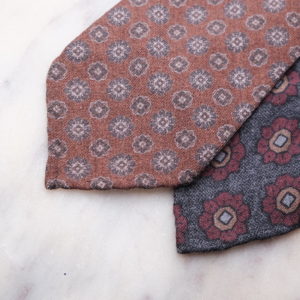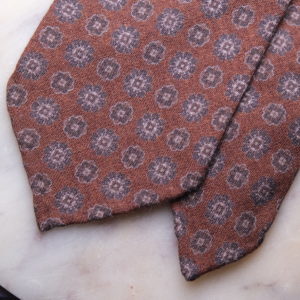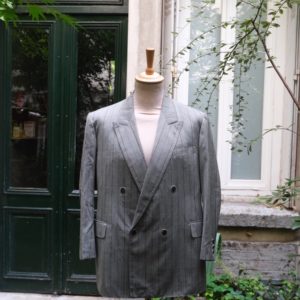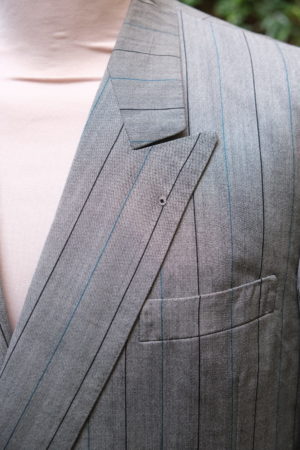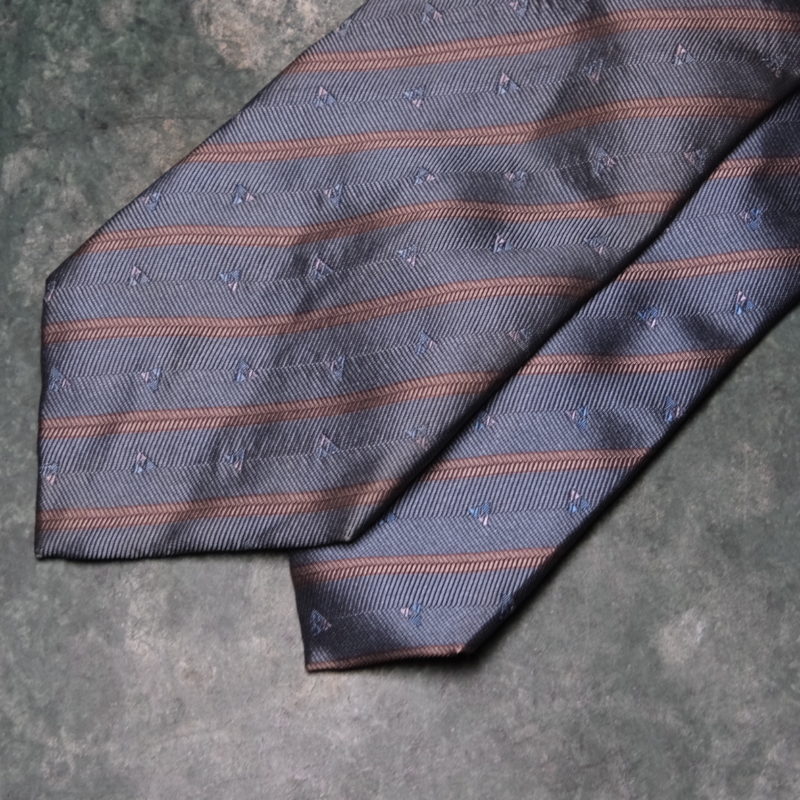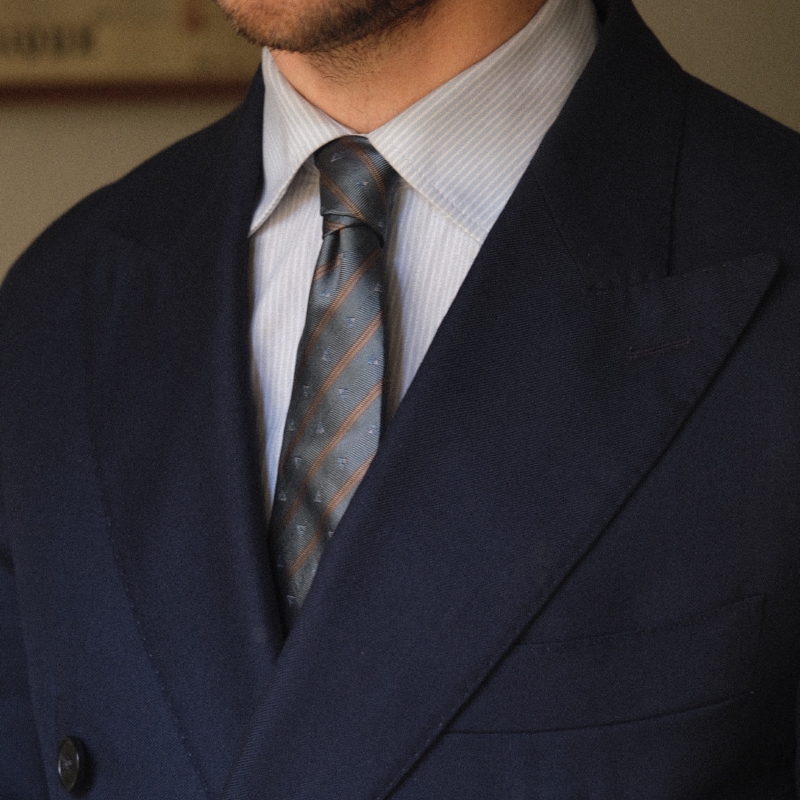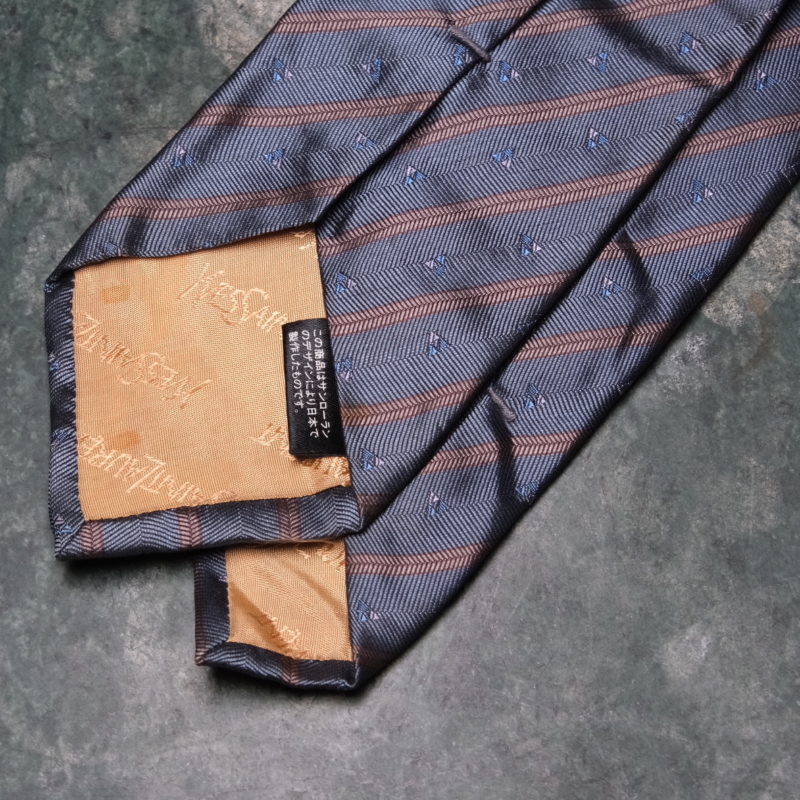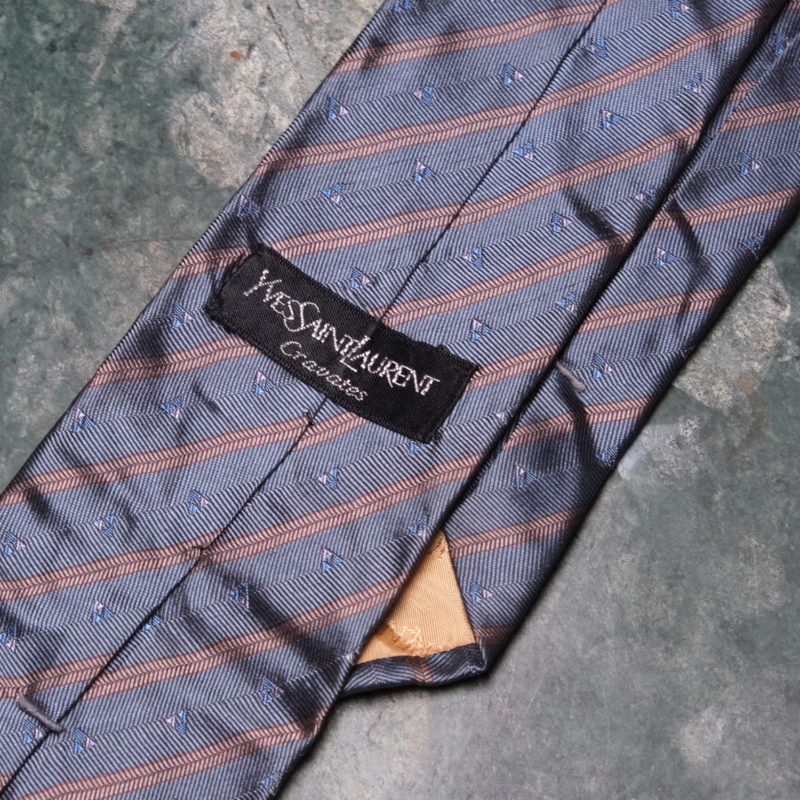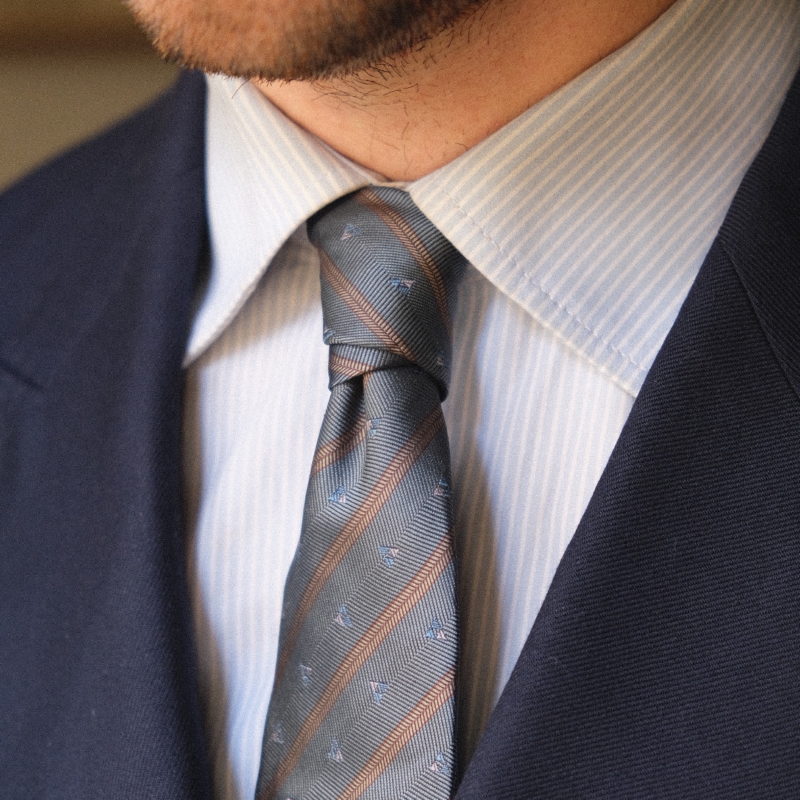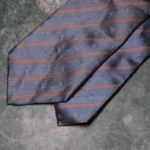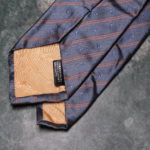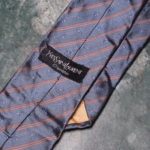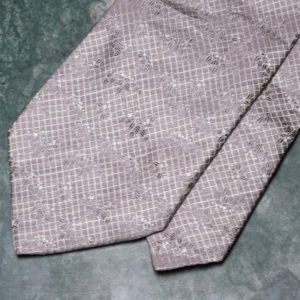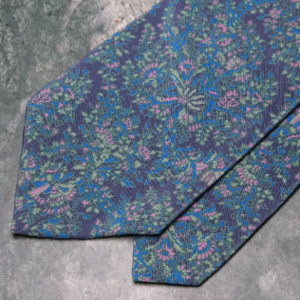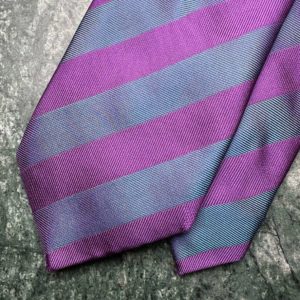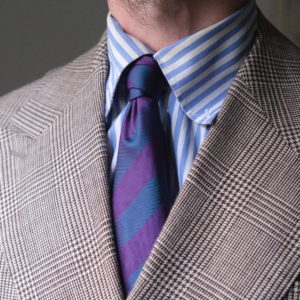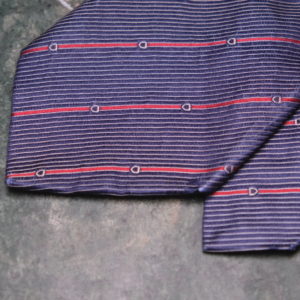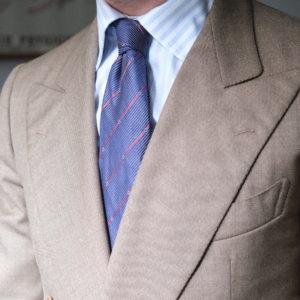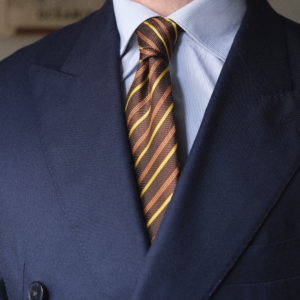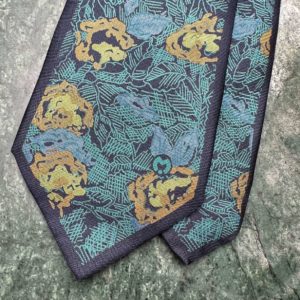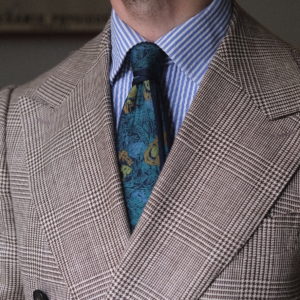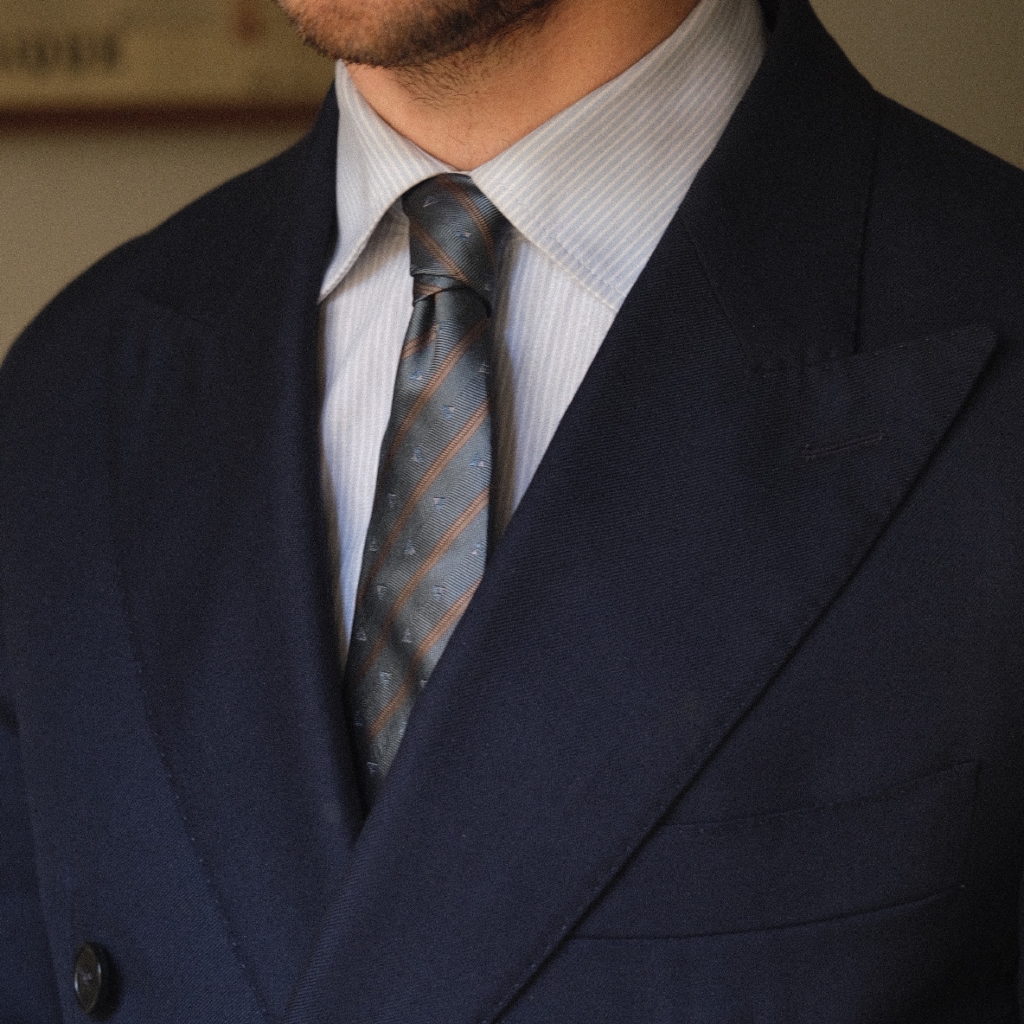
Patterns and styling tips
The striped pattern
Club, repp and regimental ties used to account for a hell of a lot of production in Japan and South Korea: it’s no surprise that they’re part of our selection and will accompany your best preppy style.
About the brand
Yves Saint-Laurent
We won’t be talking about the brand’s evolution into Saint-Laurent following the arrival of Hedi Slimane in 2013, but rather about vinage ties between the 60s and 90s.
The choice of patterns in Yves Saint-Laurent ties from the 60s to the 90s reflects the artistic and cultural movements of the time. In the 60s, fashion was influenced by hippie and psychedelic culture, characterized by bright colors and bold patterns. Yves Saint-Laurent ties from this period reflected this aesthetic, with psychedelic and floral motifs.
In the 70s, fashion was influenced by disco and glamour, and Yves Saint-Laurent ties from this era were often adorned with sequins and geometric patterns. The colors were equally vivid, reflecting the excess and opulence of the period.
In the 80s, fashion was more sober and classic, with more fitted cuts and simpler patterns. Yves Saint-Laurent ties from this period reflected this aesthetic, with geometric checkerboard patterns and broad stripes.
In the 90s, fashion was influenced by minimalism and sobriety, with cleaner cuts and darker colors. Yves Saint-Laurent ties from this period reflected this aesthetic, with more restrained and elegant designs, such as fine stripes and subtle floral motifs.
